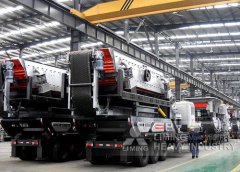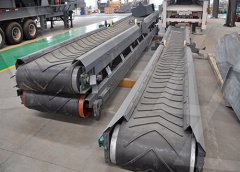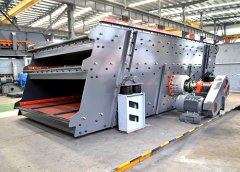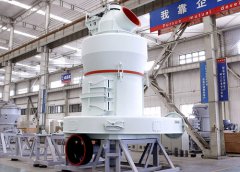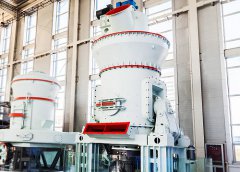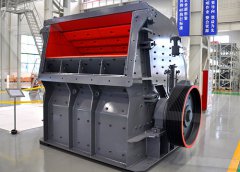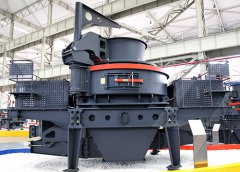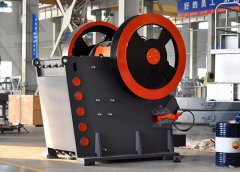
Cumene process
The cumene process (cumene-phenol process, Hock process) is an industrial process for synthesizing phenol and acetone from benzene and propylene. The term stems from cumene (isopropyl benzene), the intermediate material during the process. It was invented by R. Ūdris and P. Sergeyev in 1942 (USSR), and independently by Heinrich Hock in 1944. This process converts two relatively cheap starting materials, benzene and propylene, into two mMaterial Balances Design Problem Cumene Production Background Cumene (isopropyl benzene) is produced by reacting propylene and benzene over an acid catalyst. Cumene Material Balances Design Problem Cumene Production Background
get price
(PDF) Production of phenol from cumene Systematic
In the base case, 0.66 kg of phenol and 0.41 kg of acetone are produced per kg of cumene with an energy consumption of The purpose of this paper is to develop the economically optimum design considering capital costs, energy costs, and raw material costs and then to develop a Design and Control of the Cumene Process Industrial
get price
The cumene process for phenol-acetone production
The history of designing and the evolution of the process for the joint production of phenol and acetone, which is now the basic industrial method for the Figure 1 Phenol production by cumene process (McKetta Jr 1990) Figure 2 Cumene oxidation to hydroperoxide (Matar, Table IX Energy balance for LAPPEENRANTA UNIVERSITY OF TECHNOLOGY LUT
get price
Process Flowsheet of the production of phenol from
Context 1 illustrate the methodology, a case study [1] is used. It is the process used to produce phenol from cumene hydroperoxide (CHP) (Fig. 7). The use and reuse of water as the main...obsolete, 100–120 kg/t of phenol. As shown by the experience of ILLA, all three types of obsolete plants can be successfully transformed by means of modern technology into The Cumene Process for Phenol–Acetone Production Springer
get price
Production of Phenol PDF Chemical Reactor Reaction Rate
mixture of cumene,oxygen and cumene hydroperoxide (73722.26 kg / h). From calculation. of energy balance we obtain Q heat transfer (-6710.005 kJ/s ). As a conclusion we can. assume that the phenol production per year is 165.6 kmole / year. During the process with. Q=-6710.005 kJ/s heat is being released during the process. f Phenol is the precursor to many materials and a very useful compounds. The global phenol market predicts to witness a robust CAGR of 6.8% from 2017 to 2022. The cumene process segment should be worth almost Mini Project Plant Design (Production Of Phenol)
get price
(203r) Production of Phenol From Cumene Systematic and Efficient
A commercial simulator is used for process simulation (design verification), ICAS for property prediction and analysis of design options and ECON for cost and economic evaluation. A production rate of 300,000 metric tons/year of phenol is considered. In the base case, 0.66 kg of phenol and 0.41 kg of acetone are produced per kg of cumene Cumene production is an important intermediate process for the production of phenol and acetone. This paper discusses different modelling strategies to solve the mathematical model of cumene reactor.Design and Control of the Cumene Process ResearchGate
get price
2 Raw Materials Springer
Raw materials origin for the production of phenolic resins. West -Germany 1983 lion tons in the USA. The actual US production forthat year amounted to 1.16 million t11>, world production was about 3.5 million t. 2.1.3 Phenol Production Processes The cumene process is by far the most important synthetic process3 SJ for the producCumene. S. Nikfar, A.F. Behboudi, in Encyclopedia of Toxicology (Third Edition), 2014 Abstract. Cumene (Chemical Abstracts Service Registry Number 98-82-8) is a water-insoluble petrochemical used in the manufacture of several chemicals including phenol and acetone. It volatilizes into the atmosphere from water and dry soil. Cumene strongly Cumene an overview ScienceDirect Topics
get price
Solid Acid Catalysts for the Hock Cleavage of Hydroperoxides
The oxidation of cumene and following cleavage of cumene hydroperoxide (CHP) with sulfuric acid (Hock rearrangement) is still, by far, the dominant synthetic route to produce phenol. In 2020, the global phenol market reached a value of 23.3 billion US$ with a projected compound annual growth rate of 3.4% for 2020–2025. Abstract— In the large-scale production of phenol by the cumene method, an important constituent is the separation of multicomponent mixtures containing the target products and various impurities. The potential of distillation processes of a specific composition is determined by the structure of the vapor–liquid equilibrium diagram Development of Flowsheet of Separation of a Phenol Production
get price
Solid Acid Catalysts for the Hock Cleavage of Hydroperoxides
The oxidation of cumene and following cleavage of cumene hydroperoxide (CHP) with sulfuric acid (Hock rearrangement) is still, by far, the dominant synthetic route to produce phenol. In 2020, the global phenol market reached a value of 23.3 billion US$ with a projected compound annual growth rate of 3.4% for 2020–2025. The desired cumene production rate is 100,000 metric tons/yr. Process Details Feed Streams Stream 1: benzene, pure liquid, 25°C and 1 atm Stream 2: propylene with 5 wt% propane impurity, saturated liquid at 25°C Effluent Streams Stream 9: fuel gas stream, credit may be t aken for LHV of fuel Stream 12: cumene product, assumed pure EquipmentEnergy Balances and Numerical Methods Design Project Production of Cumene
get price
One-Step Catalytic or Photocatalytic Oxidation of
Phenol is an important chemical compound since it is a precursor of the industrial production of many materials and useful compounds. Nowadays, phenol is industrially produced from benzene WATSaxsrr : Production of phenol from cumene added dropwise from a dropping funnel, so that the liquid flowed down the wall in a thin layer. The outside of the tube wall was cooled by means of water, kept at 10 C. The reaction mixture was collected in a flask placed in ice under the tube. Fig. 7.Production of phenol from cumene ScienceDirect
get price
Economic Design and Optimization of Zeolite
According to. the material balance of this process and assuming a stream factor of 0.95, the annual. production rate of cumene is 99,960 metric ton. The grass root capital investment of. the1. Introduction. The green chemistry concept aims at significant mitigation of the negative impact of the chemical industry on the environment [1].It was formulated in the 90 s of the XX Century and subsequently became widespreaded [1].In terms of production, processing and use of chemical products, this concept assumes the following: 1) the Design of cumene oxidation process ScienceDirect
get price
Reactive Distillation for Phenol Production Using Different Types
Production of phenol from exothermic cleavage reaction of cumene hydroperoxide (CHP) was investigated by using reactive distillation technique in the presence of prepared zeolite catalysts fromCumene Production Change in Reactor Conditions; Design of a New, 100,000 Metric Ton Per Year, Cumene Production Facility; Material Balances Design Problem Cumene Production; Energy Balances and Numerical Methods Design Project Production of Cumene; Fluid Mechanics, Heat Transfer, Thermodynamics Design Project Production Cumene Process,Technology, Applications, Patent, Consultants
get price
Source Assessment: Manufacture of Acetone and Phenol From Cumene
Source Description 9 Process description 10 Plant material balance 33 Geographic distribution 33 4. 1975 PRODUCTION AND 1977 CAPACITY FOR PHENOL AND ACETONE Production, 19759, D Material Phenol, total Phenol, (65). Cumene Peroxidation Process— The cumene to phenol process is described in detail in Section 3.Abstract and Figures. The importance of the cumene production process is growing, thus it has to be examined and better solutions for lowering production costs are proposed. It is now feasible to(PDF) Design and simulation of cumene plant ResearchGate
get price
LAPPEENRANTA UNIVERSITY OF TECHNOLOGY LUT
Figure 1 Phenol production by cumene process (McKetta Jr 1990) Figure 2 Cumene oxidation to hydroperoxide (Matar, Table IX Energy balance for phenol and acetone separation Table X Phenolic resin decomposition with thermal cracking (Vol'-Epshtein, Gagarin 1973,The reaction steps for phenol production via the cumene process. The production of cumene (isopropylbenzene) is a Friedel–Crafts reaction and occurs by the reaction between benzene and propene, using an acid catalyst [8]. In one process, benzene and propene (3:1 mole ratio) are passed over an acid catalyst. The excessOne-Step Catalytic or Photocatalytic Oxidation of Benzene to Phenol
get price
